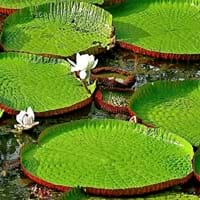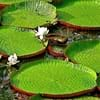Life Span
Annual
Perennial
Type
Aquatics
Bulb or Corm or Tuber
Origin
Hybrid origin
Southern Africa, South Africa
Types
Not Available
Cusick's camas, large camas
Number of Varieties
Not Available
Habitat
along watercourse
meadows, moist forests, Open Plains
USDA Hardiness Zone
10-15
8-10
AHS Heat Zone
12-9
Not Available
Habit
Spreading
Rosette/Stemless
Flower Color
White, Pink, Light Pink
White, Yellow, Red, Blue, Purple, Pink, Lavender, Violet
Flower Color Modifier
Not Available
Bicolor
Fruit Color
Not Available
Not Available
Leaf Color in Spring
Green, Yellow green, Bronze
Green
Leaf Color in Summer
Green, Yellow green
Light Green
Leaf Color in Fall
Green, Yellow green
Several shades of Green
Leaf Color in Winter
Green, Yellow green
Light Green
Leaf Shape
Disc shaped
Long slender
Plant Season
Spring, Summer, Fall
Spring, Winter
Sunlight
Full Sun
Full Sun, Partial Sun
Type of Soil
Clay, Loam
Loam
The pH of Soil
Acidic, Neutral
Acidic, Neutral
Soil Drainage
Not Available
Well drained
Bloom Time
Summer, Indeterminate
Early Spring, Spring, Late Winter, Indeterminate
Tolerances
Wet Site
Black Walnut Toxicity, Rabbit, Shade areas
Where to Plant?
In Water
Container, Ground, Pot
How to Plant?
Seedlings
chipping, Offsets, scooping, Twin scaling, Vegetative
Plant Maintenance
Medium
Low
Watering Requirements
Keep immersed in water
Medium
In Summer
Aquatic Plant
Lots of watering
In Spring
Aquatic Plant
Moderate
In Winter
Aquatic Plant
Average Water
Soil pH
Acidic, Neutral
Acidic, Neutral
Soil Type
Clay, Loam
Loam
Soil Drainage Capacity
Not Available
Well drained
Sun Exposure
Bright direct sunlight
Full Sun, Partial Sun
Pruning
Remove damaged leaves
Remove damaged leaves, Remove dead branches, Remove dead leaves
Fertilizers
No fertilizers needed
All-Purpose Liquid Fertilizer, General garden fertilizer, Time release fertilizer
Pests and Diseases
Aphids, Snails
Pests and diseases free
Plant Tolerance
Frost, Full Sun
Black Walnut Toxicity, Rabbit, Shade areas
Flower Petal Number
Double
Single, Double, Semi-Double
Foliage Texture
Bold
Medium
Foliage Sheen
Glossy
Glossy
Attracts
Insects, Moths, Snakes
Insects
Allergy
Skin irritation
Asthma
Aesthetic Uses
Cottage Garden, Showy Purposes
Bouquets, Cottage Garden
Beauty Benefits
Making cosmetics
For treating wrinkles, Remove blemishes, Skin Problems
Environmental Uses
No fertilizer, pesticides, or herbicides needed, Very little waste
Air purification, Forms dense stands, Very little waste
Medicinal Uses
Not Available
Leucoderma, Urinary problems
Part of Plant Used
Flowers
Bulbs, Root
Other Uses
Used as Ornamental plant
Animal Feed, Decoration Purposes, Showy Purposes
Used As Indoor Plant
Sometimes
Yes
Used As Outdoor Plant
Yes
Yes
Garden Design
Feature Plant, Tropical, Water Gardens
Bedding Plant, Container, Cutflower, Mixed Border, Rock Garden / Wall
Botanical Name
VICTORIA 'Longwood Hybrid'
Hyacinthus orientalis
Common Name
Giant Waterlily, Longwood Hybrid Giant Waterlily
Hyacinth, common hyacinth, garden hyacinth, dutch hyacinth
In Hindi
पानी लिली
ह्यचीन्थ
In German
Riesen- Seerose
Hyazinthe
In French
géant nénuphar
jacinthe
In Spanish
lirio de agua
jacinto
In Greek
νούφαρο
υάκινθος
In Portuguese
waterlily
jacinto
In Polish
Lilia wodna
hiacynt
In Latin
ingens aqua lilium,
et hyacinthinas,
Phylum
Angiosperms
Magnoliophyta
Class
Equisetopsida
Liliopsida
Order
Nymphaeales
Liliales
Family
Nymphaeaceae
Liliaceae
Genus
Victoria
Hyacinthus
Clade
Angiosperms
Angiosperms, Monocots
Tribe
Not Available
Not Available
Subfamily
Not Available
Scilloideae
Number of Species
Not Available
Difference Between Giant Waterlily and Wild Hyacinth
If you are confused whether Giant Waterlily or Wild Hyacinth are same, here are some features about those plants to help you choose better. Many people think that these two plants have the same characteristics, but one can see Giant Waterlily and Wild Hyacinth Information and learn more about it. Fertilizers required for proper growth of Giant Waterlily are No fertilizers needed, whereas for Wild Hyacinth fertilizers required are All-Purpose Liquid Fertilizer, General garden fertilizer and Time release fertilizer. Hence, one should know the basic difference between Giant Waterlily and Wild Hyacinth if you are planning to have them in your garden to enhance its beauty.
<
Flowering PlantsImportance of Giant Waterlily and Wild Hyacinth
Want to have the most appropriate plant for your garden? You might want to know the importance of Giant Waterlily and Wild Hyacinth. Basically, these two plants vary in many aspects. Compare Giant Waterlily and Wild Hyacinth as they differ in many characteristics such as their life, care, benefits, facts, etc. Every gardener must at least have the slightest clue about the plants he wants to plant in his garden. Compare their benefits, which differ in many ways like facts and uses. The medicinal use of Giant Waterlily is Not Available whereas of Wild Hyacinth is Leucoderma and Urinary problems. Giant Waterlily has beauty benefits as follows: Making cosmetics while Wild Hyacinth has beauty benefits as follows: Making cosmetics.
Compare Facts of Giant Waterlily vs Wild Hyacinth
How to choose the best garden plant for your garden depending upon its facts? Here garden plant comparison will help you to solve this query. Compare the facts of Giant Waterlily vs Wild Hyacinth and know which one to choose. As garden plants have benefits and other uses, allergy is also a major drawback of plants for some people. Allergic reactions of Giant Waterlily are Skin irritation whereas of Wild Hyacinth have Asthma respectively. Having a fruit bearing plant in your garden can be a plus point of your garden. Giant Waterlily has no showy fruits and Wild Hyacinth has no showy fruits. Also Giant Waterlily is not flowering and Wild Hyacinth is not flowering . You can compare Giant Waterlily and Wild Hyacinth facts and facts of other plants too.





